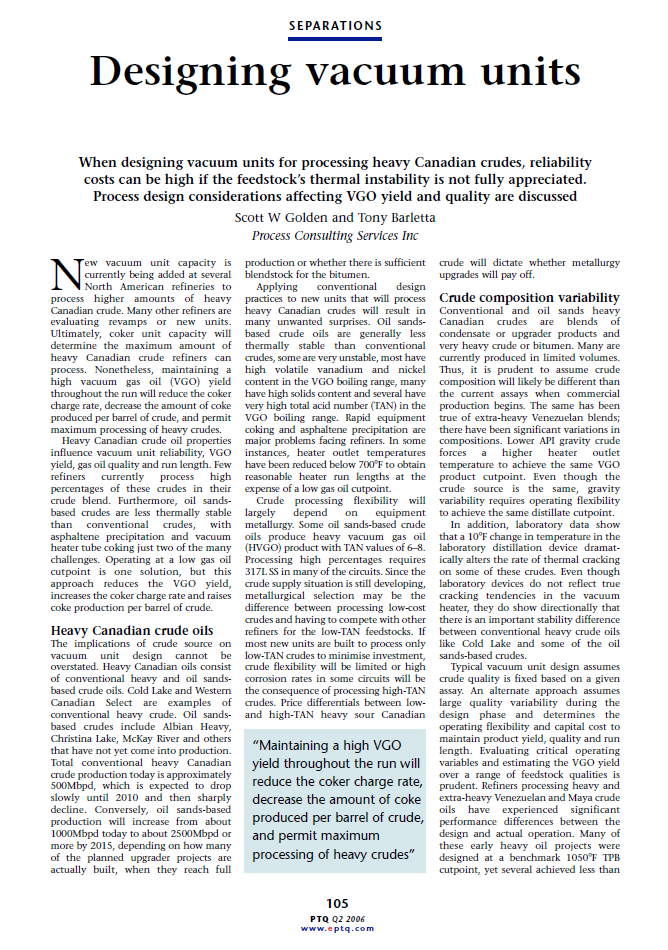Designing Vacuum Units
SUMMARY
When designing vacuum units for processing heavy Canadian crudes, reliability costs can be high if the feedstock’s thermal instability is not fully appreciate. Process design considerations affection VGO yield and quality are discussed.
TEXT
New vacuum unit capacity is currently being added to several North American refineries to process higher amounts of heavy Canadian crude. Many other refiners are evaluating revamps or new units. Ultimately, coker unit capacity will determine the maximum amount of heavy Canadian crude refiners can process. Nonetheless, maintaining a high vacuum gas oil (VGO) yield throughout the run will reduce the coke produced per barrel of crude, and permit maximum processing of heavy crudes.
Heavy Canadian crude oil properties influence vacuum unit reliability, VGO yield, gas oil quality and run length. Few refiners currently process high percentages of these crudes in their crude blend. Furthermore, oil sands-based crudes are less thermally stable than conventional crudes, with asphaltene precipitation and vacuum heater tube coking just two of the many challenges. Operating at a low gas oil cutpoint is one solution, but this approach reduces the VGO yield, increases the coker charge rate and raises coke production per barrel of crude.
The implications of crude source on vacuum unit design cannot be overstated. Heavy Canadian oils consist of conventional heavy and oil sands based crude oils. Cold Lake and Western Canadian Select are examples of conventional heavy crude. Oil sands based crudes include Albian Heavy, Christina Lake, McKay River and others…

